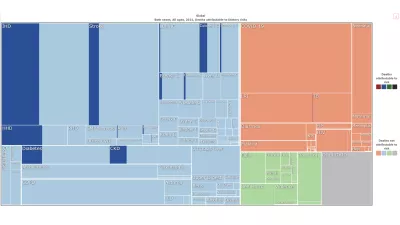Diet
How much disease burden can be attributed to diet, and what components of our diet are most harmful? We explore the link between dietary changes and population health.
Photo by Filip Milovac.
We appreciate your feedback!
Help us improve our website with a quick 2-minute survey.
What components of diet affect health the most?
Poor diet increases the risk of certain health conditions. Three of the top 15 risk factors for early death in 2021 were dietary risk factors: high sodium intake, low fruit intake, and low whole grain intake.
- High sodium is the dietary risk with the largest impact on health, mainly due to its contribution to cardiovascular diseases like ischemic heart disease and hypertensive heart disease.
- Low consumption of healthy foods like fruits, vegetables, and whole grains puts populations at higher risk of cardiovascular disease.
A 2022 study led by IHME researchers found that increasing vegetable consumption from zero to 306–372 g daily was associated with:
- 23.2% decline in the risk of ischemic stroke
- 22.9% decline in the risk of ischemic heart disease
- 15.9% decline in the risk of hemorrhagic stroke
- 28.5% decline in the risk of esophageal cancer
Unhealthy diet is a prominent global health risk.

How do we study dietary risks?
For the Global Burden of Disease study, we estimate the burden of disease for adults 25 and older associated with 15 dietary risk factors: fruits, vegetables, legumes, whole grains, nuts and seeds, fiber, seafood omega-3 fatty acids, omega-6 polyunsaturated fatty acids, calcium, milk, sodium, red meat, processed meat, sugar-sweetened beverages, and trans fats.
These dietary risk factors can be harmful (like sugar-sweetened beverages), meaning they increase the risk of disease; protective (like vegetables); or have mixed effects depending on the amount consumed and the disease outcome in question.
How good is the evidence on diet and risk of disease?
Measuring the effect of diet on health outcomes can be complicated by lack of available evidence. For this reason, it is important to understand two factors:
- The strength of the relationship between a certain health risk (like eating too much sodium) and a health outcome (like heart disease)
- The strength of the evidence for the risk-outcome relationship
While some risk-outcome pairs have clear evidence of association – for example, low vegetable consumption and elevated risk of ischemic stroke – others are less clear, like red meat and ischemic stroke. We assess the strength of evidence behind dietary risk factors and their associated health outcomes in our Burden of Proof work.


